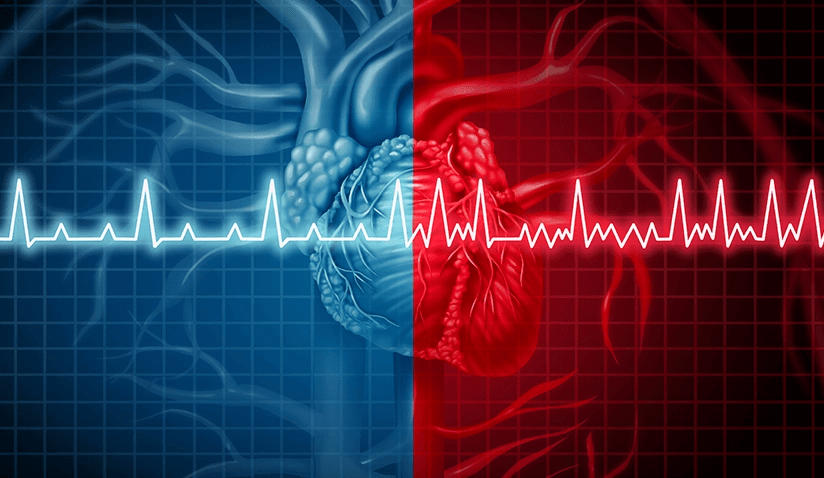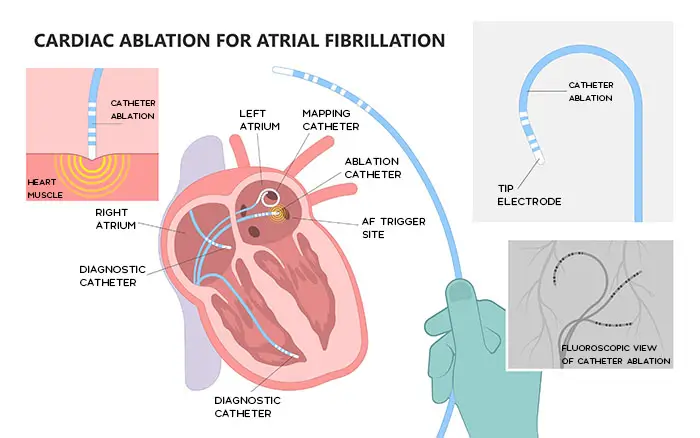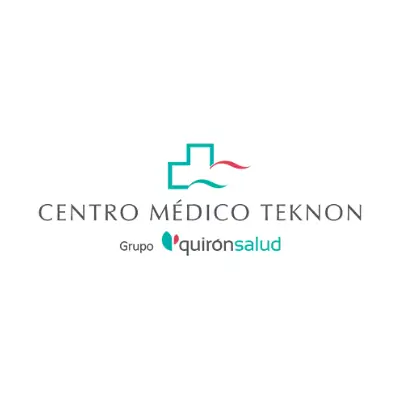Ablation for Treating Atrial Fibrillation: A Personalized Approach

Electrical impulses control the normal rhythm and rate of heartbeats. When the heart’s electrical system becomes chaotic, the heartbeats become irregular.
In patients with atrial fibrillation (A-fib), the heart’s upper chambers beat rapidly, disrupting the heart's regular rhythm. A-fib can be asymptomatic, or it can cause fast heartbeats, shortness of breath, and dizziness. According to a retrospective study, the rate of atrial fibrillation (the most prevalent cause of cardiac arrhythmia) has increased by over 30% in the last 20 years. Prevalence is projected to be up to 12 million in the US by 2050 and nearly 18 million in Europe by 2060. A-fib also increases the risk for stroke and other heart problems. Atrial fibrillation patients usually take lifelong anticoagulation medication, which increases the risk of bleeding.
Cardiac ablation uses an intravascular catheter (a long, thin, flexible tube) to ablate abnormal heart tissue providing a definite treatment for atrial fibrillation. Ablation uses minor burns or freezes to scar the inside of the heart. This scarring disrupts the electrical signals that cause irregular heartbeats, thus resulting in a normal cardiac rhythm. Personalized approaches to atrial fibrillation ablation can ensure durable results and prevent the recurrence of atrial fibrillation.
Personalized ablation of atrial fibrillation is exclusively done in highly specialized cardiac centers.
What is Atrial Fibrillation?
Atrial fibrillation (A-fib) is a heart condition that causes irregular heartbeats (arrhythmia) that are often very rapid.
The heart comprises 4 chambers; 2 upper chambers (atria) and 2 lower ones (ventricles). A-fib happens when the atria beat irregularly, and their rhythm becomes out of sync with the ventricles. This happens because a group of cardiac cells in the atrium produces irregular electric signals.
Although many people with atrial fibrillation may have no symptoms, atrial fibrillation might cause:
- Heart palpitations (rapid pounding heartbeats)
- Shortness of breath
- Dizziness
- Fatigue
- Chest pain
People with atrial fibrillation sometimes also experience atrial flutter (a related heart rhythm problem due to an irregular electrical impulse in the heart’s upper chambers i.e. the atria).
In addition, atrial fibrillation increases the risk of stroke, heart failure, heart attacks, and other heart complications.
Episodes of A-fib may be intermittent – they come and go and are called paroxysmal atrial fibrillations, or they may be persistent. Although atrial fibrillation isn’t a life-threatening condition in itself, it requires proper treatment to prevent stroke and relieve symptoms.
Atrial fibrillation is usually treated with heart rhythm medications, anticoagulant treatment, or medical therapy to reset the heart rhythm.
Recently, a newer, more advanced treatment has been developed to permanently treat faulty cardiac tissue, called cardiac ablation. It involves ablating the defective cardiac cells and restoring the rhythmic electric impulses in the heart.
Although atrial fibrillation and atrial flutter are different types of arrhythmia, their treatment is very similar.
What is Cardiac Ablation?
Cardiac ablation is a procedure during which a catheter is introduced intravascularly to ablate faulty heart cells and correct irregular heart rhythms.
Atrial fibrillation ablation works by interrupting the abnormal electrical pathway in the heart to restore the normal rhythm. The faulty cardiac cells are “burnt”, or more precisely, isolated from the rest of the heart. The procedure is called “pulmonary vein isolation” because the origin of atrial fibrillation is located in the transition between the pulmonary veins and the left atrium. The isolation of the pulmonary veins results in an elimination of the trigger of the arrhythmia that causes atrial fibrillation.
Depending on the type of the heart rhythm problem, different types of cardiac ablation can be performed in patients with atrial fibrillation:
- Pulmonary vein isolation – the mainstay of atrial fibrillation ablation
- AV node ablation
- Ablation of the substrate for atrial fibrillation outside the pulmonary veins

Who Needs A-fib Ablation?
For some patients, A-fib ablation may be the first line of treatment. For other patients, it may be recommended in case heart medications or other atrial fibrillation treatments don’t work.
Atrial fibrillation ablation is widely used to control uncomfortable Afib symptoms such as heart palpitations and shortness of breath. It is also used to improve symptoms of heart failure in patients having both conditions, heart failure and atrial fibrillation, or even heart failure provoked exclusively by atrial fibrillation (called tachycardiomyopathy).
Candidates for the atrial fibrillation ablation procedure are:
- Patients who have persistent symptoms even with A-fib medications
- Patients who cannot tolerate heart medications or have had complications from those medications
- Patients who prefer ablation instead of antiarrhythmic treatment
- As first line treatment in patients with heart failure caused or worsened by atrial fibrillation
Patients who receive ablation treatment for their atrial fibrillation may no longer need anticoagulant medications - another benefit of this minimally invasive therapy.
How is Ablation for Atrial Fibrillation Done?
Cardiac specialists perform thorough tests before ablation that may include electrocardiograms, echocardiography, blood tests, and cardiac CT or MRI.
During catheter ablation for treating atrial fibrillation:
- Your doctor will first identify a point of access for the catheter (usually in the groin area).
- Then, you will receive a local anesthetic applied to the skin (topical sedative), which will numb a small area near a vein. Cardiac ablation can also be done under general anesthesia, where you will be put to sleep.
- Subsequently, a catheter is inserted through the vein and carefully guided towards the heart.
- The sensors at the tip of the catheter send electrical impulses and record the heart’s electricity. This helps doctors to locate the abnormal tissue and determine the best place for ablation,
- Then, radiofrequency energy (heat) or cryo energy (cold) is sent through the catheter and applied to the target area. This energy is used to electrically isolate the pulmonary veins from the rest of the atrium.
- Finally, your incision sites will be closed and bandaged.
Afib ablation usually takes less than 1 hour at leading centers. Afterwards, you will be taken to a recovery room where the medical team will closely monitor you.
You will spend a night in the hospital and can go home the following day.
Personalized Atrial Fibrillation Ablation
Very few heart centers in Europe and worldwide offer a personalized approach for atrial fibrillation ablation. With personalization, doctors make careful considerations to optimize each ablation procedure and prevent the recurrence of fibrillation.
This is done by ensuring that the heat energy delivered by the catheter produces enough scar tissue in the atrial tissue - just the right amount necessary, not more or less. As a result, ablation is much more efficient, safer and more durable i.e. recurrences are reduced to the minimum.
To make sure enough lesions are created in the atrial wall, the medical team controls different parameters, such as:
- The duration of each delivered electric impulse
- The power of the delivered radiofrequency energy
- The temperature of the used energy
- The degree of electric resistance (impedance)
- The force applied with the ablation catheter
Each one of these parameters are modified and adapted to the left atrial wall thickness at each point. The direct visibility enabled by a CT scan images obtained before the ablation procedure helps guide the intervention.
AF ablation by “LAWT” protocol
A highly specialized protocol for AF ablation called “ Ablation-by-LAWT” has been shown to give patients maximum long-lasting results in the safest way possible.
LAWT, which stands for left atrial wall thickness, involves determining the thickness of the targeted left atrial wall area that will help choose the correct dose of RF energy to be delivered.
The LAWT protocol also involves:
- Determining the type of atrial fibrillation (paroxysmal or persistent) before catheterized cardiac ablation
- Obtaining a CT scan before the intervention to derive the LAWT (left atrial wall thickness information)
- Performing ablations under general anesthesia for respiratory movement reduction and maximum catheter movement precision, to improve outcomes
- Performing the procedure with a single catheter technique, to reduce catheter manipulation in your heart, and increase safety
- Keeping the patient in an inguinal compression bandage – for groin support– for 6 hours after the ablation procedure
- Checking for pericardial effusion before starting oral anticoagulants after the ablation of atrial fibrillation
Leading centers also use state-of-the-art high-tech imaging techniques, such as multidetector CT scan (MDCT), transthoracic echocardiogram (TTE), and transesophageal echocardiogram (TEE) to ensure maximum safety and accuracy during the ablation of atrial fibrillation.
Cardiac ablation treatment offers a permanent treatment for certain heart rhythm problems. It can be very effective in relieving A-fib symptoms. It is also crucial in reducing the risk of worsening heart failure.
Designing atrial fibrillation ablation procedures according to each patient’s cardiac anatomy and condition can dramatically improve the ablation results, facilitate safer and more efficient procedures, and effectively prevent arrhythmia recurrences.

Dr. Antonio Berruezo Sánchez is the Director of the Department of Arrhythmias and Research and Innovation of the Teknon Heart Institute at Teknon Medical Center, Barcelona, Spain. He is one of Europe’s top specialists in interventional treatment of cardiac arrhythmia. Additionally, he is acclaimed for his contributions to the prevention and treatment of sudden death, and pacemaker and defibrillator implantation.
Dr. Berruezo is a member of a select group of specialists entrusted with formulating cardiac arrhythmia treatment guidelines for American, European and Asian scientific societies. He also leads international courses on preventing sudden death due to arrhythmia by using ablation techniques. Dr. Antonio Berruezo Sánchez has authored over 200 research articles published in prestigious international journals.

Led by Dr. Antonio Berruezo, arrhythmia specialists at The Teknon Heart Institute in Barcelona, Spain perform hundreds of successful atrial fibrillation ablation procedures each year. Comprising a multidisciplinary team of cardiologists, heart surgeons, vascular surgeons, specialists in cardiac imaging, hemodynamics, electrophysiology, and experts in cardiovascular rehabilitation, the institute specializes in the study, diagnosis and full treatment of cardiovascular illnesses.
The Teknon Heart Institute is super-specialized in:
- Cardiology and Coronary Care
- Angiology, Vascular and Endovascular Surgery
- Cardiac Imaging
- Hemodynamics and Intervention Cardiology
- Electrophysiology and Cardiac Arrhythmia
- Vascular Intervention Radiology
- Cardiovascular Surgery
Sources:
Featured Blogs



